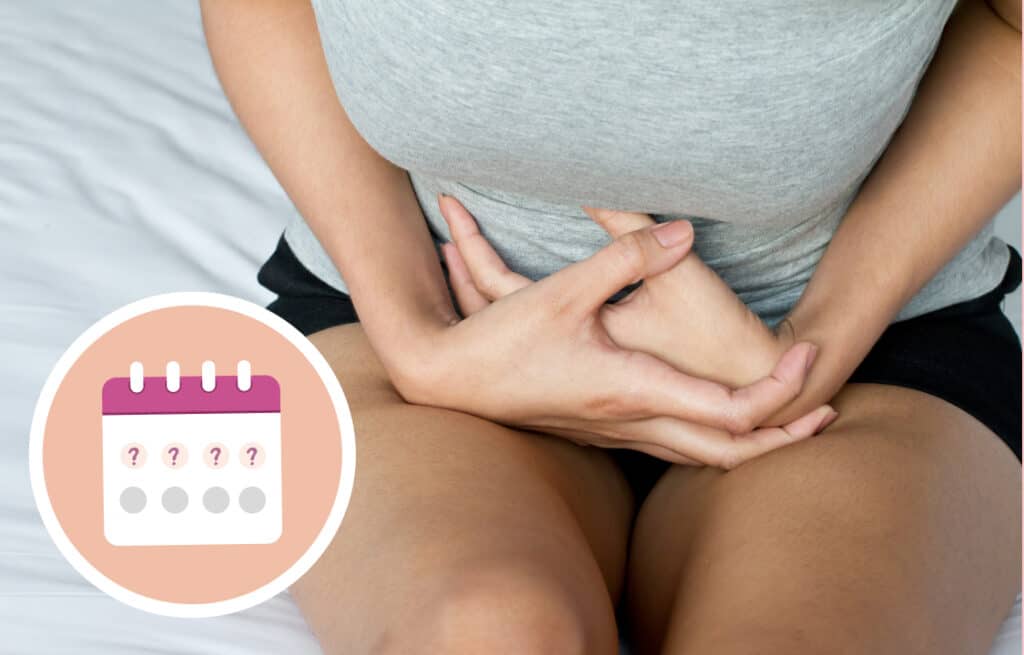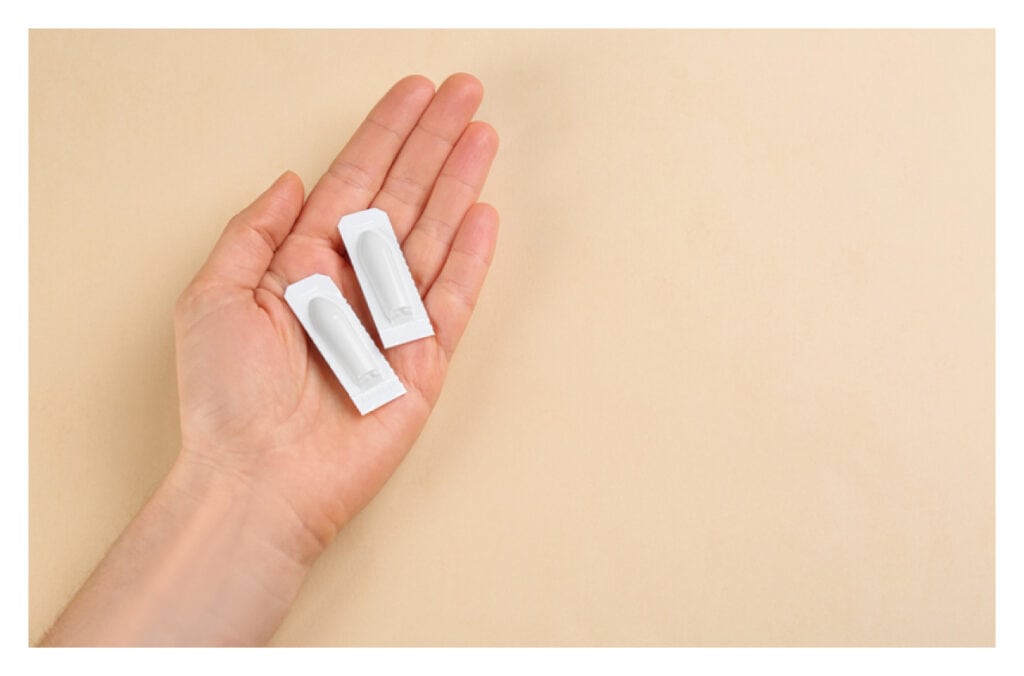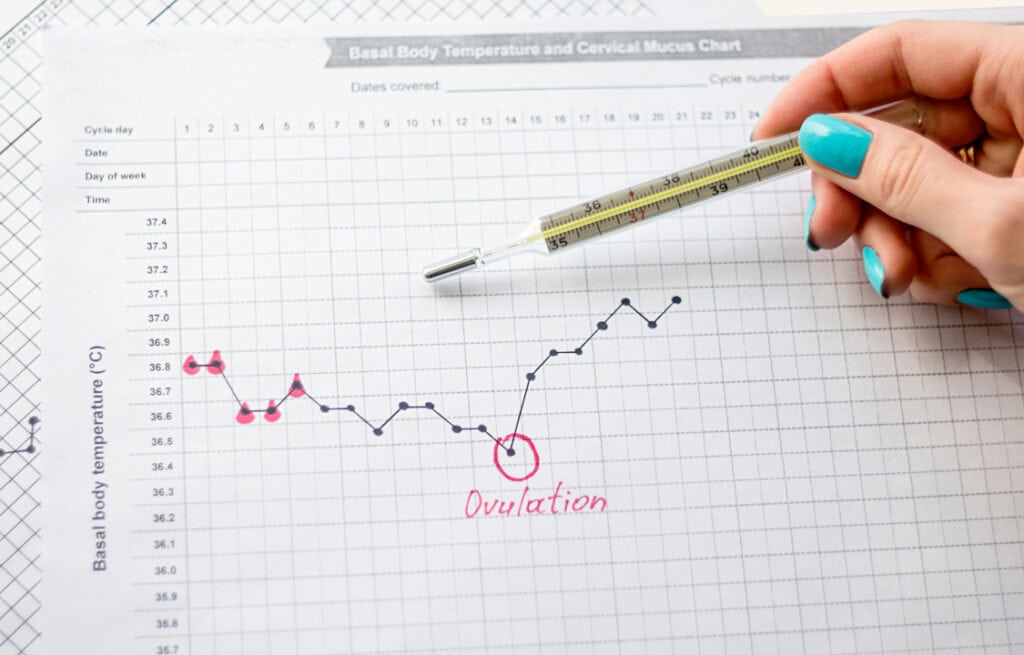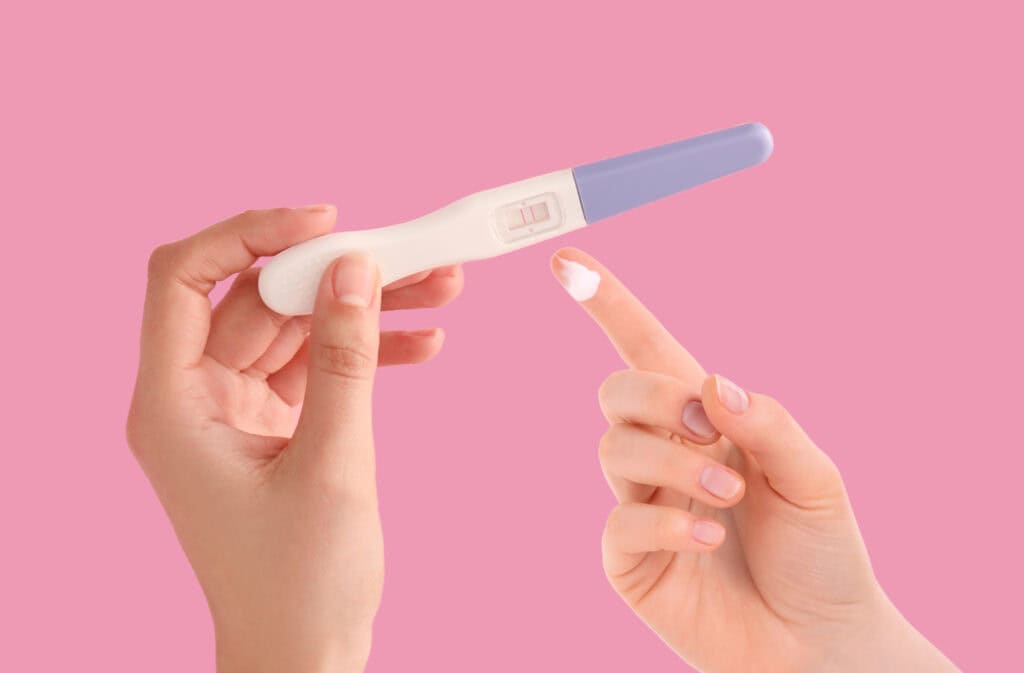Femia > Health Library > Getting Pregnant > Trying to conceive > Why do you have cramps but no period: Pregnancy or something else?
Why do you have cramps but no period: Pregnancy or something else?

- Updated Feb 14, 2025
- Published
CRAFTED BY HUMAN
Crafted by human At Femia, we provide accurate and up-to-date information at every stage of your journey, from trying to conceive, pregnancy and postnatal support. All content is created by a real person based on in-depth research and own professional experience. Femia ensures that you will receive expert advice, strict accuracy and a personalized approach from our authors/medical experts. Learn more about our editorial policy.
FACT CHECKED
Fact checked At Femia Health, we maintain the highest standards of editorial excellence in delivering content focused on helping you conceive, guiding you through pregnancy, and supporting you postpartum. Explore our content review principles to learn how we ensure the accuracy and quality of our health and lifestyle tips for every stage of your journey.
- There are several reasons why you may have cramps but no period. Ovulation pain, early pregnancy, hormonal imbalances, and stress could be some causes.
- Underlying medical conditions, such as endometriosis, fibroids, inflammatory bowel disease, etc., can also be reasons for cramping with no period.
- Significant cramping, nausea, fever, or any other alarming symptoms warrant a medical check-up.
Whenever you feel the subtle onset of cramps, it usually signals that your period is around the corner. However, sometimes you may have cramping but no period. Most often the reasons are no cause for concern, such as being in a time of higher stress or feeling the twinges of ovulation. Early pregnancy signs, such as implantation, could also be one of the reasons for cramping with no period. Persistent cramping with no period might also signal some serious underlying medical conditions requiring medical attention. In this article, we will look through the common and medical reasons for cramps with no period, along with signs indicating you might need to check in with your doctor.
Use Femia’s easy-to-use ovulation tracker, symptom log, and daily insights to
understand your fertility better and increase your chances of conception
Common causes of cramping without a period
Cramping is not always associated with your period. There are several instances, even during your menstrual cycle, where you may experience period pain but no period.
Ovulation
During ovulation you can experience period symptoms but no period. Ovulation pain, known as Mittelschmerz, affects about 40% of women of reproductive age. Along with cramping, there can be bloating, breast tenderness, spotting, and changes to your cervical mucus consistency.
Early pregnancy
Mild cramping without starting your period can be the earliest sign of pregnancy. Around 8-10 days after fertilization, you can expect the egg to begin implanting into your uterus. Since this cramping is felt close to your period date and can be accompanied by light bleeding, you can mistake it for a period. However, if the cramping subsides and you miss your period, it may be a sign to check for pregnancy.
Stress and lifestyle factors
Stress has been associated as a cause of cortisol dysfunction. This, in turn, has been linked to a pro-inflammatory state that can exaggerate your pain response. Loss of sleep, a sedentary lifestyle, and a lack of the basic nutrients in your diet can all contribute to cortisol dysfunction, which can exaggerate your sensation of period pain with no period.
Hormonal imbalances
In a survey of over 7 million women in the TriNextX Global Network for PCOS, 19.21% of women with PCOS had a pain diagnosis. Fluctuation in reproductive hormone conditions such as PCOS and thyroid hormone dysfunction can result in period pain without a period. Irregular menstrual cycles, weight gain, and coarse body hair are other symptoms linked with these hormonal fluctuations.
Perimenopause
Experiencing heightened period symptoms but no period can be noticed during perimenopause. A small study among perimenopausal women recorded a new onset of symptoms during perimenopause, one of which was cramping regardless of being accompanied by a period. The fluctuating estrogen and progesterone levels during this time are primarily responsible for this period pain but no period.
👉Find out more: Discharge before period vs early pregnancy: How to tell the difference
Cramping with discharge
If you are experiencing cramping and have vaginal discharge, it could signal several underlying possibilities.
- Ovulation can increase vaginal discharge because of the estrogen spike that occurs around this time.
- Vaginal discharge can also be noticed as an early pregnancy symptom along with cramping. The increase in blood flow due to the spike in pregnancy hormones is what causes an increase in vaginal discharge during early pregnancy.
- Unusual vaginal discharge, along with cramping but no period, can be an indicator of an underlying infection. To confirm this you will need to check in with your doctor.
As we have seen above, hormonal conditions influence the balance of your reproductive hormones. So along with cramping, you may also notice changes in your vaginal discharge.
Use Femia’s easy-to-use ovulation tracker, symptom log, and daily insights to
understand your fertility better and increase your chances of conception
Potential medical causes of cramps but no period
While hormonal and lifestyle factors can contribute to your lower abdominal pain but no period, underlying medical issues can also be a cause. Most of these require individualized treatment following a check-up with your doctor.
Endometriosis
Endometriosis is when uterine lining tissue is found in areas outside the uterus, such as your ovaries, vagina, and abdomen. Cramping and severe period pain are often the only clues for endometriosis. Pain can also be experienced during sex, while passing stool, or urinating, depending on where the uterine tissue is located. It can take many years for this condition to be diagnosed, and is often misdiagnosed in earlier stages for other conditions such as PCOS or pelvic inflammatory disease.
Fibroids
An Italian study reported increased pain during sex and noncyclic pelvic pain among women with fibroids when compared to women without fibroids. Muscular and connective tissue growths in the uterus are referred to as fibroids. Severe cramping and significant bleeding are symptoms associated with fibroids. Depending on the size of your underlying fibroid, it is possible to experience period pain but no period.
Pelvic inflammatory disease
An infection from STDs such as chlamydia, gonorrhea, or both can cause pelvic inflammatory disease. As a consequence of reproductive tract inflammation, you may experience cramps but no period. Additionally, you can also experience foul-smelling discharge, painful intercourse, fever, and burning while passing urine.
Ovarian cysts
Ovarian cysts are fluid-filled sacs inside the ovary. Some cysts can be small and result in no symptoms. They often subside on their own. Larger cysts result in pressure and cramping but no period.
UTI or bladder infections
Along with burning urination, increased urinary frequency, and burning sensations during sex, you may experience lower abdominal pain but no period if you have a UTI. Urinary tract infections can cause pain due to inflamed organs and irritated surrounding structures, such as your reproductive tract.
👉Find out more: TTC meaning and a guide to fertility acronyms for beginners
When to take a pregnancy test
Taking a pregnancy test too soon can show up as a false negative test. As we have seen above, you can experience implantation cramping 8-10 days after ovulation. This is around the time your period is also due.
The ideal time to take a pregnancy test is once you have missed your period. This is about two weeks after ovulation. While symptoms such as cramping but no period, sore breasts, and nausea can all be early signs of pregnancy, only a pregnancy test can confirm it.
Once implantation has taken place, pregnancy hCG hormones are produced. This specific hormone can be picked up by either a blood or urine test. Testing too soon will result in a negative test even if you are pregnant because the hormone hasn’t had time to build to detectable levels.
When to seek medical advice
Experiencing period pain but no period can be common during ovulation, PMS, elevated stress, or slight hormonal fluctuations. Early pregnancy can also be marked with light cramping and missing your period. However, if cramping is accompanied by these symptoms, be sure to check in with your doctor:
- Severe and persistent cramping
- Unusual or foul-smelling discharge
- Fever
- Heavy vaginal discharge
- Heavy bleeding
- Nausea or vomiting
- Pain during sex
- Burning during urination and increased urinary frequency
Questions from the Femia community
Can certain medications cause cramps without a period?
Cramping can be a side effect of certain medicines you are taking, such as birth control pills or other prescription medications. These cramps usually subside on their own. If they increase and persist, consider checking in with your doctor.
Does dehydration cause abdominal cramps?
If you are dehydrated, you can experience muscle cramps as well as abdominal cramps. This cramping may not be related to your period. It subsides once your water intake is sufficiently maintained.
How long should I wait before seeing a doctor about cramps and no period?
If your period is late by more than a week, and your cramps are severe, persistent, and accompanied by any alarm symptoms, it would be best to check in with your doctor. While simple causes such as stress can cause period delays, more significant underlying causes should be ruled out.
Can I have cramps but no period while I am on birth control?
Since birth control pills contain hormones, they can cause cramping as a side effect. These cramps are usually felt if you have recently started taking pills or changed prescriptions. If the cramps persist and are severe, consider consulting with your physician.
The bottom line
Causes of cramps but no period are frequently due to harmless underlying causes such as ovulation, elevations in stress, signs of early pregnancy, or mild hormonal fluctuations. In some instances, medical conditions such as PCOS, endometriosis, pelvic inflammatory disease, fibroids, or a UTI could be responsible.
Tracking your symptoms and discussing them with your doctor can help you discover the reasons for cramping with no period. Most of the causes are treatable either through simple lifestyle management or a personalized treatment plan provided to you by your doctor.
References
- “Mittelschmerz.” PubMed, 1 Jan. 2025, pubmed.ncbi.nlm.nih.gov/31747229.
- Wilcox, Allen J., et al. “Time of Implantation of the Conceptus and Loss of Pregnancy.” New England Journal of Medicine, vol. 340, no. 23, June 1999, pp. 1796–99. https://doi.org/10.1056/nejm199906103402304.
- Hannibal, Kara E., and Mark D. Bishop. “Chronic Stress, Cortisol Dysfunction, and Pain: A Psychoneuroendocrine Rationale for Stress Management in Pain Rehabilitation.” Physical Therapy, vol. 94, no. 12, July 2014, pp. 1816–25. https://doi.org/10.2522/ptj.20130597.
- Saran, Sanjay, et al. “Effect of Hypothyroidism on Female Reproductive Hormones.” Indian Journal of Endocrinology and Metabolism, vol. 20, no. 1, Dec. 2015, p. 108. https://doi.org/10.4103/2230-8210.172245.
- Lippman, Sheri A., et al. “Uterine Fibroids and Gynecologic Pain Symptoms in a Population-based Study.” Fertility and Sterility, vol. 80, no. 6, Dec. 2003, pp. 1488–94. https://doi.org/10.1016/s0015-0282(03)02207-6.
- Institute for Quality and Efficiency in Health Care (IQWiG). “Overview: Ovarian Cysts.” InformedHealth.org – NCBI Bookshelf, 21 Apr. 2022, www.ncbi.nlm.nih.gov/books/NBK539572.

Discover the purpose, uses, indications, and side effects of progesterone suppository in detail, including its role in supporting pregnancy and what to expect.

Wondering if ovulation pain means you’ve missed your chance to conceive? Learn about the timing of ovulation pain, conception possibilities, and what it means for pregnancy.

Learn how cervical mucus changes after ovulation if pregnant. Discover what discharge indicates early pregnancy and how to interpret signs to track conception success.

